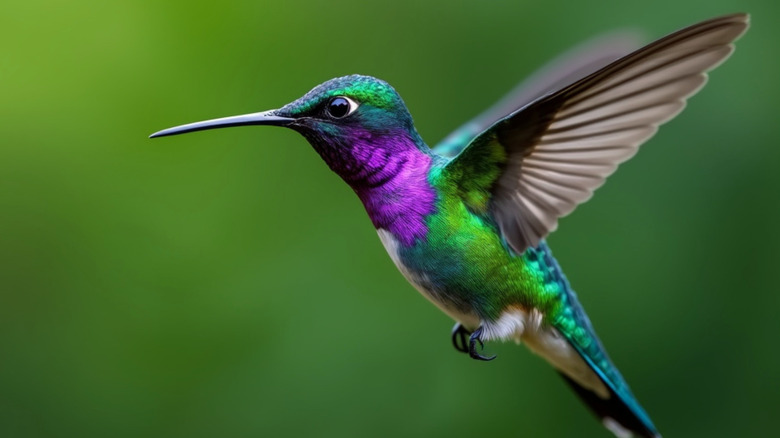The Tough Perennial With Lasting Blooms That'll Attract Pollinators To Your Garden
One of the biggest decisions you'll need to consider when you are first starting a pollinator garden is which plants are best for the long term. Let's face it, you don't want a bunch of plants that lose their blooms too early, or it will defeat the purpose of creating a pollinator-attracting paradise. Pollinators like hummingbirds, bees, and butterflies need to have a reliable source of nectar from spring to late fall. One way to ensure that you are providing these important critters with food throughout the seasons is to plant a variety of perennial flowers that bloom at different times. Or, you can incorporate one plant that blooms from July through October, goldenrod (Solidago bicolor), also known as silver-rod or white goldenrod.
Besides being a wonderful source of nectar late in the season for pollinators, white goldenrod is a midwestern native perennial that is extremely hardy and very low-maintenance. Its delicate white blooms create nectar that is vital for many species of bees to build up fat reserves to make it through the harsh winter months. It also draws songbirds that love the seeds. White goldenrod is also the perfect choice if you are trying to attract multiple species of pollinators like butterflies, hummingbirds, bees, moths, beetles, and wasps. Yes, moths, beetles, and wasps — you shouldn't mistake these lesser-known pollinators as pests, as they absolutely play a role in your garden.
How to grow white goldenrod in a pollinator garden
White goldenrod grows well in a variety of different soils, but prefers drier soil that is heavy in clay. It enjoys full sun to partial shade and is drought-tolerant. This makes it one of the flowers that even the worst gardeners can handle. If you are in USDA Hardiness Zones 5 through 10, you will be able to grow this species of goldenrod as a cold-hardy perennial. If planting seedlings, make sure you dig your holes twice as wide as your plants' root balls before covering with soil and watering. If direct sowing seeds, use the broadcast method by sprinkling the seeds over your chosen garden area with a light cover of soil, then water.
To get the most out of your white goldenrod, you can add it to a pollinator garden with compatible companion plants. These include purple coneflower (Echinacea purpurea), blue vervain (Verbena hastata), butterfly milkweed (Asclepias tuberosa), and hairy oat grass (Deschampsia flexuosa). Together, they will create the perfect, welcoming environment to attract beneficial pollinators throughout the gardening season.
